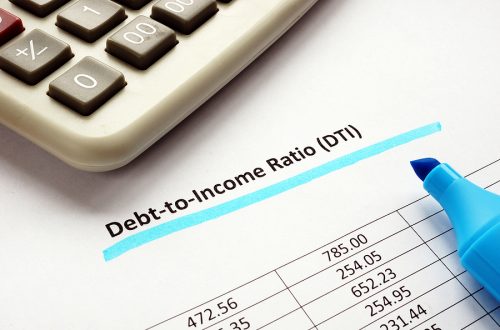Consumer debt. It seems to be an inevitable part of life for many Americans. In fact, most American consumers carry some level of debt. Getting out of it, however, is not so easy, which is why so many Americans use at least some portion of their income to pay towards their debt. Determining how much is appropriate can be complicated, depending on the consumer’s individual circumstances.
Generally speaking, it is important to pay more than the monthly minimum payment. A good rule of thumb is to follow the 50/30/20 rule. What this budgeting rule entails is the consumer spends 50 percent of monthly after-tax income or net income towards essential living expenses, such as mortgage payments, utility bills, food, and transportation costs. After that 50 percent is paid, the consumer allots the next 30 percent to his or her “wants,” meaning eating out, going on vacation, and other non-essential expenses. The remaining 20 percent is left for paying off debt or saving for the future.
Not all debt is lumped into that 20 percent. Since a home and a car is considered a “need” instead of a “want,” mortgages and car payments are lumped into the “need” category or the initial 50 percent.
For mortgage debt, financial experts recommend that the consumer’s mortgage payments should be no more than 28 percent of his or her monthly income. This amount allows the consumer enough room in their budget to allocate to other expenses or debts.
Financial experts also recommend that consumers put their credit card debts in the “needs” category of spending. Since credit card debt carries higher interest rates, making it significantly harder to pay off over time, which is why it is important that it be paid off as quickly as possible.
If the consumer is not able to pay off the credit card balance in full, it is advisable to put no more than 10 percent of the consumer’s income each month towards paying off credit card debt. However, putting any more than 10 percent of monthly income towards credit card debt can put him or her in a difficult financial position to pay the remainder of his or her other necessary expenses.
It is important that debt does not take up more than 36 percent of the consumer’s income. The consumer’s debt-to-income ratio is important which compares how much the consumer owns versus how much he or she owes. Debt-to-income ratio is important when it comes to being approved for financing in the future. The higher the ratio, the harder it can be to obtain financing.
While these rules apply in many situations, every consumer’s individual circumstance is unique. These guidelines are meant to help consumers get on the right track. If the amount of debt the consumer is struggling with becomes to be too much, a consumer bankruptcy case may be the best option for him or her. An experienced bankruptcy attorney will be able to meet with the consumer and determine what would be the best course of action to help that person.
Please click here to read more.
If you have questions on this topic or are in financial crisis and considering filing for bankruptcy, contact an experienced Miami bankruptcy attorney who can advise you of all of your options. As an experienced CPA as well as a proven bankruptcy lawyer, Timothy Kingcade knows how to help clients take full advantage of the bankruptcy laws to protect their assets and get successful results. Since 1996 Kingcade Garcia McMaken has been helping people from all walks of life build a better tomorrow. Our attorneys’ help thousands of people every year take advantage of their rights under bankruptcy protection to restart, rebuild and recover. The day you hire our firm, we will contact your creditors to stop the harassment. Visit www.miamibankruptcy.com to learn more.


